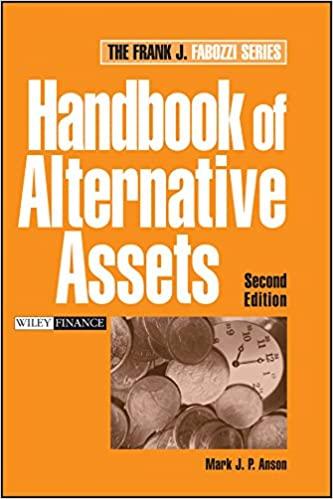Question
Answer all otherwise dont take. Question 1: A coupon bond that pays interest annually has a par value of $1,000 that matures in 3 years
Answer all otherwise dont take.
Question 1:
A coupon bond that pays interest annually has a par value of $1,000 that matures in 3 years and has a yield to maturity of 10%. If the coupon rate is 8%, the intrinsic value of the bond today will be _______.
| $885.65 | ||
| $950.26 | ||
| $970.16 | ||
| $1,000.00 | ||
| None of the above. |
Question 2:
QUESTION 2
Advantages of mutual funds to investors include which one of the following? [I] Record keeping and administration [II] Diversification [III] Guaranteed rates of return [IV] Professional management
| I only | ||
| II and III only | ||
| III and IV only | ||
| I, II and IV only | ||
| II, III, and IV only |
Question 3:
All else equal, bond prices are more sensitive to interest rate if the bond has _________. [I] Lower coupon rates [II] Longer maturity [III] Higher YTM
| I only | ||
| I and II only | ||
| II and III only | ||
| I, II and III only | ||
| III only |
Question 4:
An open-end fund has a NAV of $18.00 per share. The fund charges a 3.5% load. How much money does an investor need to spend in order to obtain one share of the fund?
| $16.39 | ||
| $17.37 | ||
| $17.63 | ||
| $18.65 | ||
| None of the above |
Question 5:
ssuming a two-factor APT world where the systematic risks are GDP risk and Oil risk, risk-free rate is 3%. Assume there exists GDP and Oil factor portfolios that are tradeable. If a trader estimates the expected return of Portfolio ABC to be 21.5%, the alpha of Portfolio ABC is _______?
| Portfolio ABC | Factor Loading | Risk Premium |
| GDP | 0.8 | 5% |
| Oil | 1.5 | 10% |
| -1.0% | ||
| -0.5% | ||
| 0.0% | ||
| 0.5% | ||
| 1.5% |
Step by Step Solution
There are 3 Steps involved in it
Step: 1

Get Instant Access to Expert-Tailored Solutions
See step-by-step solutions with expert insights and AI powered tools for academic success
Step: 2

Step: 3

Ace Your Homework with AI
Get the answers you need in no time with our AI-driven, step-by-step assistance
Get Started


